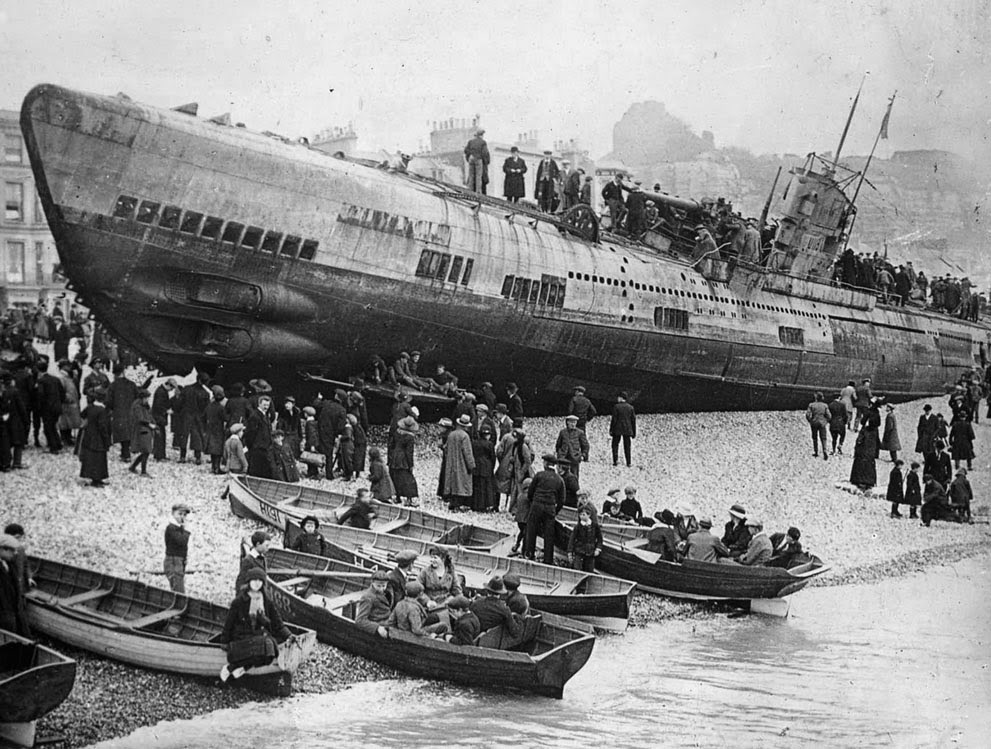Two members of the coastguard were tasked with showing important visitors around inside the submarine. The visits were curtailed when both men became severely ill, they both died shortly after. It was a mystery what killed the men at the time and so all trips into the sub were stopped, it was later discovered that chlorine gas which had been escaping from SM U-118′s batteries had caused severe abscesses on the lungs and brains of the unfortunate men. SM U-118 was commissioned on 8 May 1918, following construction at the AG Vulcan Stettin shipyard in Hamburg. It was commanded by Herbert Stohwasser and joined the I Flotilla operating in the eastern Atlantic. After about four months without any ships sunk, on 16 September 1918, SM U-118 scored its first hit on another naval vessel. With the ending of hostilities on 11 November, 1918 came the subsequent surrender of the Imperial German Navy, including SM U-118 to France on 23 February 1919. Following the surrender, U-118 was to be transferred to France where it would be broken up for scrap. However, in the early hours of 15 April 1919, while it was being towed through the English Channel towards Scapa Flow, its dragging hawser broke off in a storm. The ship ran aground on the beach at Hastings in Sussex at approximately 12:45 AM, directly in front of the Queens Hotel. Initially, there were attempts to displace the stricken vessel; three tractors tried to refloat the submarine and a French destroyer attempted to break the ship apart using its cannons. These attempts however were unsuccessful and the proximity of the submarine to the public beach and Queens Hotel dissuaded further use of explosive forces. Eventually, between October and December 1919, U-118 was broken up and the pieces removed and sold for scrap. This type of U-Boat had a length of 81.5 m, speed: 11.5 knots (21.3 km/h; 13.2 mph) surfaced and 7 knots (13 km/h; 8.1 mph) submerged, test depth: 75 m (246 ft). Total crew: 36 men. SM U-118 was a type UE II mine-laying submarine of the Imperial German Navy and one of 329 submarines serving with that navy during World War I. (Photo credit: IWM / National Archives). Notify me of new posts by email.
Δ Subscribe
.jpg)
.jpg)
.jpg)
.jpg)
